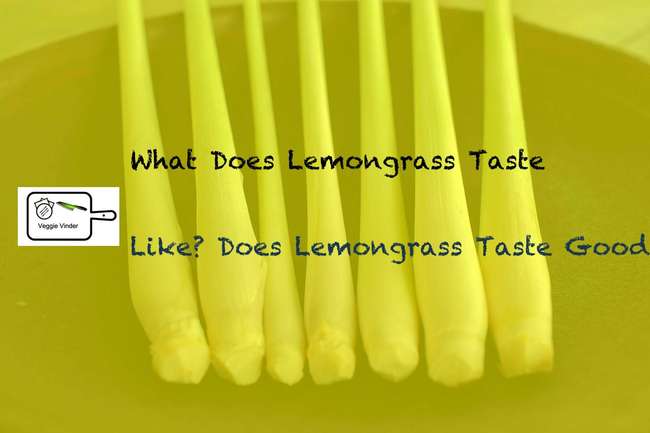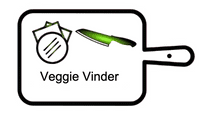What Does Lemongrass Taste Like? Does Lemongrass Taste Good?
Lemongrass is a tall grass that can grow to be over three metres high with long, thin blades.
The leaves and the stems of lemongrass both taste like lemon, but for some people, the scent of lemongrass is too much for them to handle.
Find out more about how this plant tastes in this article!
There are two oils which can be extracted from lemongrass – a clear liquid called citral and an oil with a very faint smell.
Citral is the main oil found in lemongrass as it has a strongly lemon scent.
However, the oil that is extracted from lemongrass also contains smaller amounts of terpenes.
Terpenes are molecules w
What is Lemongrass?
Lemongrass is an herb that tastes like a citrus-y, lemony flavor. It is primarily used in Asian dishes and it is often dried and ground into powder before being used. Lemongrass is a type of grass that grows in tropical and subtropical areas. It has a sweet, citrus-like flavor, which can range from light to pungent. It is sometimes used as a flavoring in teas and other drinks.

What Does Lemongrass Taste Like? Does Lemongrass Taste Good?
Lemongrass is a type of grass that grows in tropical and subtropical areas. It has a sweet, citrus-like flavor, which can range from light to pungent. It is sometimes used as a flavoring in teas and other drinks. Lemongrass is an herb that tastes like a citrus-y, lemony flavor. It is primarily used in Asian dishes and it is often dried and ground into powder before being used. Lemongrass is a type of grass that grows in tropical and subtropical areas. It has a sweet, citrus-like flavor, which can range from light to pungent. It is sometimes used as a flavoring in teas and other drinks.
How to Use Lemongrass in Recipes?
Lemongrass is a type of grass that grows in tropical and subtropical areas. It has a sweet, citrus-like flavor, which can range from light to pungent. It is sometimes used as a flavoring in teas and other drinks. Lemongrass is an herb that tastes like a citrus-y, lemony flavor. It is primarily used in Asian dishes and it is often dried and ground into powder before being used. Lemongrass is widely used in Asian cuisines to add a citrus-y, lemony flavor. You can use the entire plant as long as you are confident that there are no sharp thorns or roots. Simply chop off the top of each stem, and then split it into three or four pieces lengthwise. Place the pieces on a paper towel with a little bit of salt on it for about two hours to extract its essence. Then, place the pieces in a blender along with some water and ice, then blend until you get a fine paste.
What does lemon grass taste good with?
Lemongrass is one of the ingredients in jasmine rice pudding and lemongrass chicken soup. Lemon grass has a citrus taste with hints of mint and an uplifting, floral scent. Lemongrass has a very strong flavor that can be overwhelming for people who are not accustomed to it. The taste of lemongrass can vary depending on the length and thickness of the stalk. The taste of lemongrass is usually associated with Thai cuisine. Lemon grass has a citrus taste with hints of mint and an uplifting, floral scent.
How does lemon grass taste like?
It is one of the ingredients in jasmine rice pudding and lemongrass chicken soup. Lemon grass has a citrus taste with hints of mint and an uplifting, floral scent. Lemongrass is a type of herb that has very thin leaves but can grow up to six feet tall. Its scent is usually associated with Thai cuisine. Lemon grass has a citrus taste with hints of mint and an uplifting, floral scent. Lemongrass is one of the ingredients in jasmine rice pudding and lemongrass chicken soup. It has a citrus taste with hints of mint and an uplifting, floral scent.
Does lemon grass taste like lemon?
Lemon grass is one of the ingredients in jasmine rice pudding and lemongrass chicken soup. It has a citrus taste with hints of mint and an uplifting, floral scent. Lemongrass is a type of herb that has very thin leaves but can grow up to six feet tall. Its scent is usually associated with Thai cuisine. It is one of the ingredients in jasmine rice pudding and lemongrass chicken soup. Lemon grass has a citrus taste with hints of mint and an uplifting, floral scent.
Does lemongrass have a strong taste?
Lemongrass is a type of herb that has very thin leaves but can grow up to six feet tall. Its scent is usually associated with Thai cuisine. It is one of the ingredients in jasmine rice pudding and lemongrass chicken soup. Lemon grass is a type of lemon that has very thin leaves and can grow up to six feet tall. Its scent is usually associated with Thai cuisine. It is one of the ingredients in jasmine rice pudding and lemongrass chicken soup. It has a citrus taste with hints of mint and an uplifting, floral scent.
Does lemongrass add flavor?
Lemon grass has a citrus taste with hints of mint and an uplifting, floral scent. There are two types of lemon grass: the smaller, more widely used variety is called lemongrass, which grows to about two feet tall; longer-stemmed lemon grass is typically used in Thai cuisine. Lemon grass, or Jewel of the Fields, is a type of lemon that has very thin leaves and can grow up to six feet tall. Its scent is usually associated with Thai cuisine. It is one of the ingredients in jasmine rice pudding and lemongrass chicken soup. Lemon grass has a citrus taste with hints of mint and an uplifting, floral scent. This type of grass is used in teas, soups, and vegetables.
Is lemongrass a seasoning or flavoring?
Lemon grass, or Jewel of the Fields, is a type of lemon that has very thin leaves and can grow up to six feet tall. Its scent is usually associated with Thai cuisine. It is one of the ingredients in jasmine rice pudding and lemongrass chicken soup. Lemon grass has a citrus taste with hints of mint and an uplifting, floral scent. This type of grass is used in teas, soups, and vegetables.
